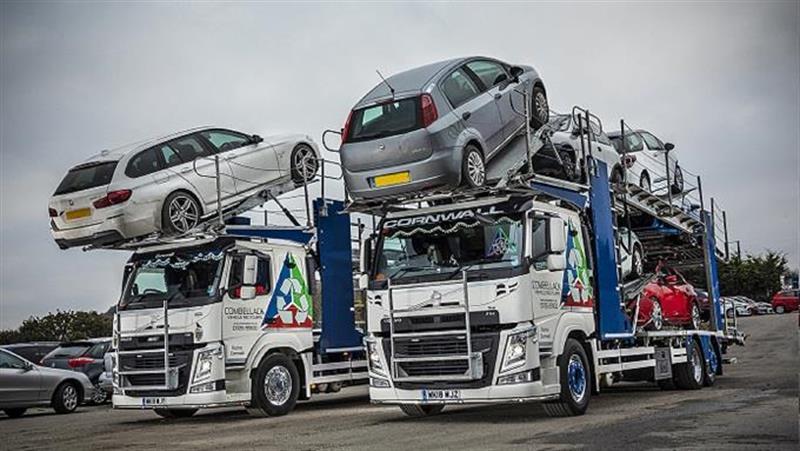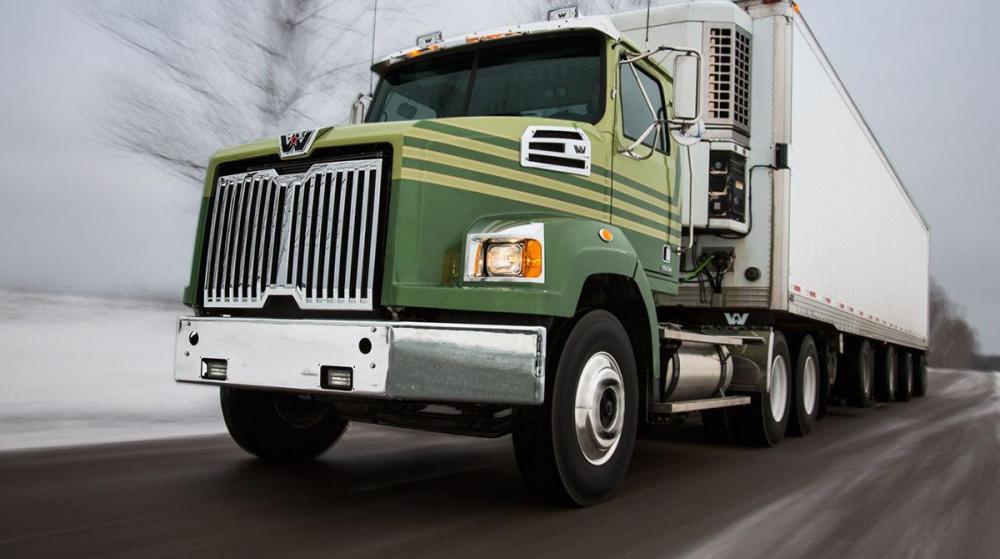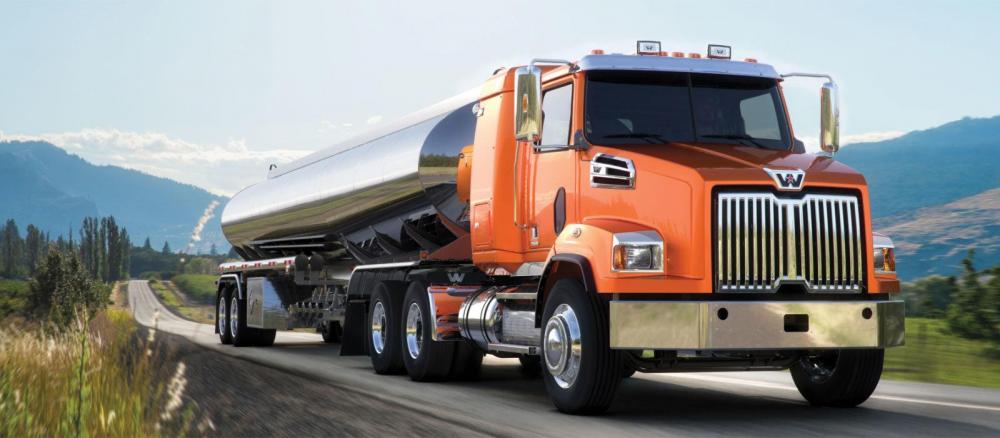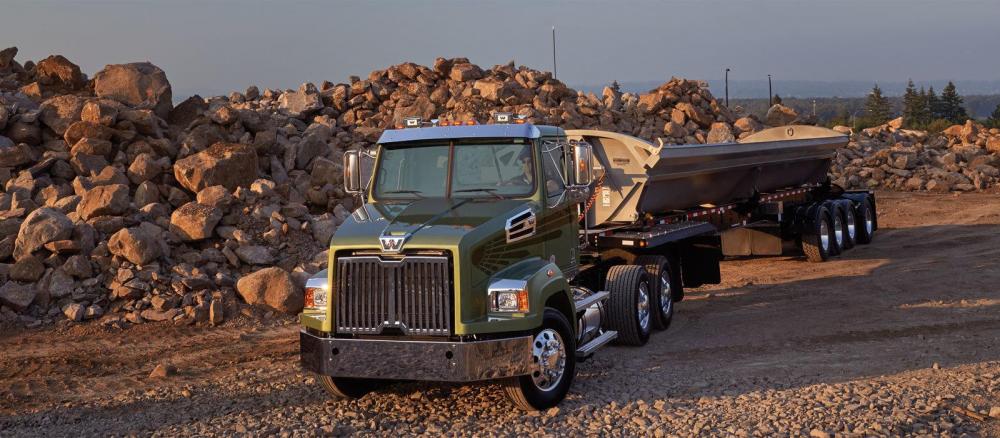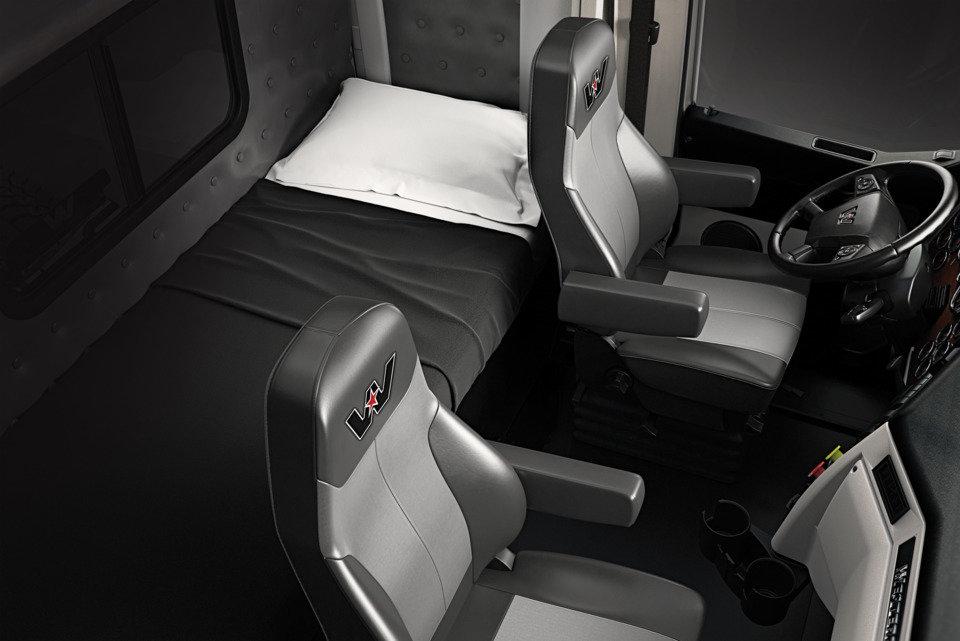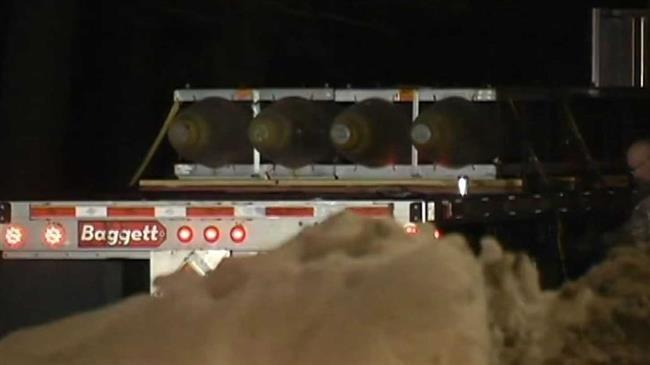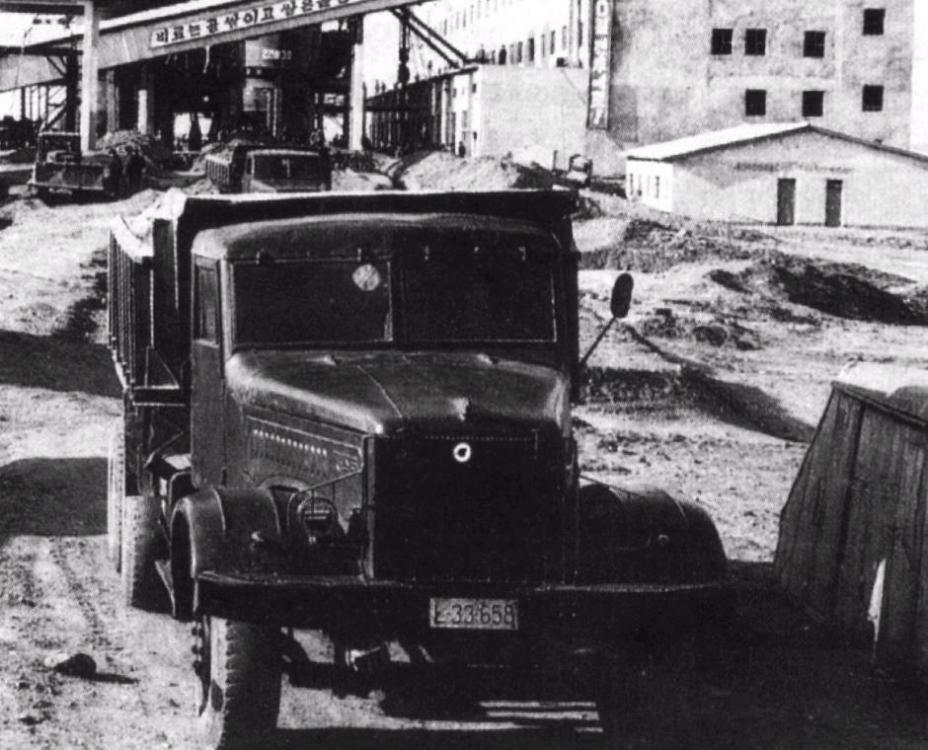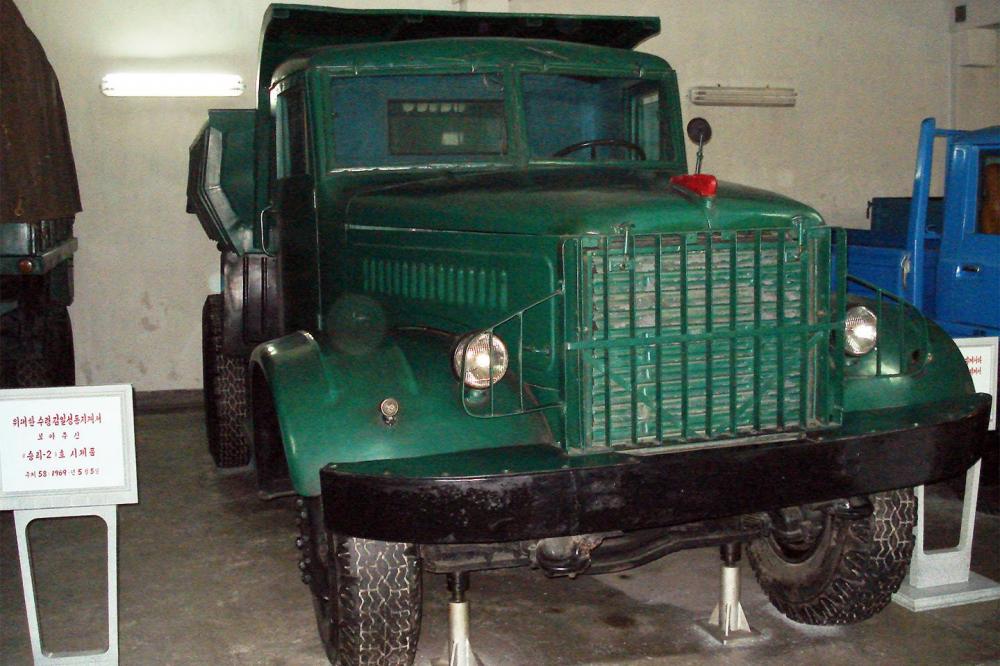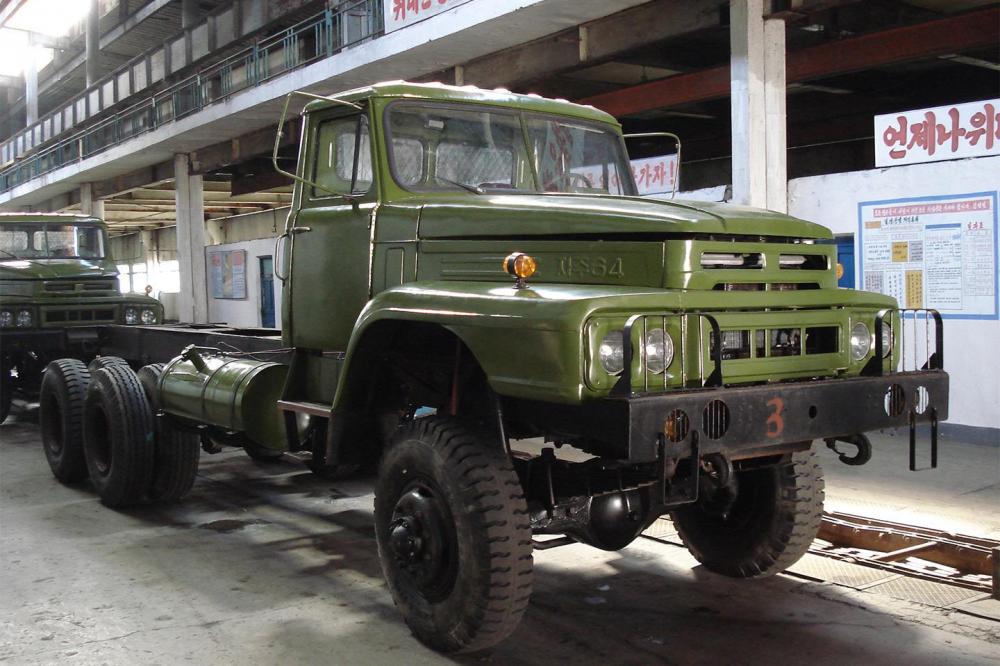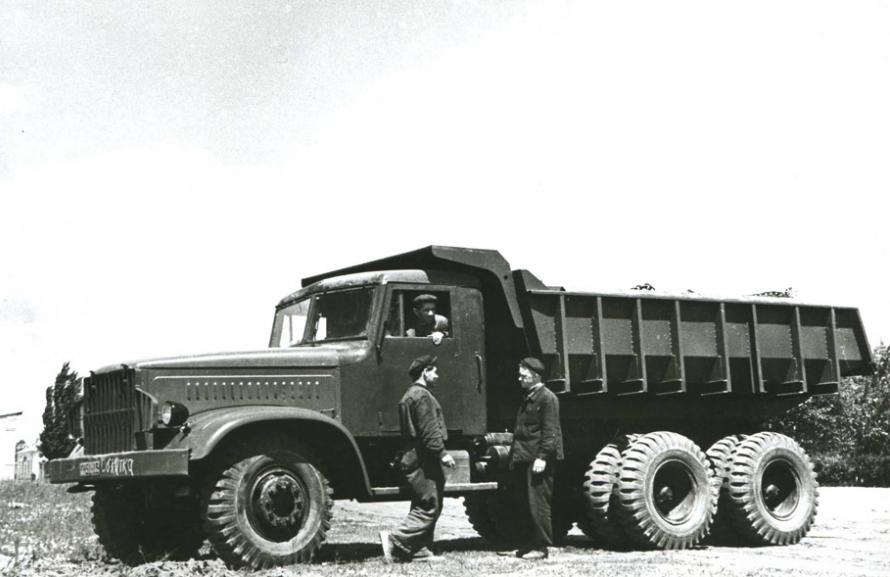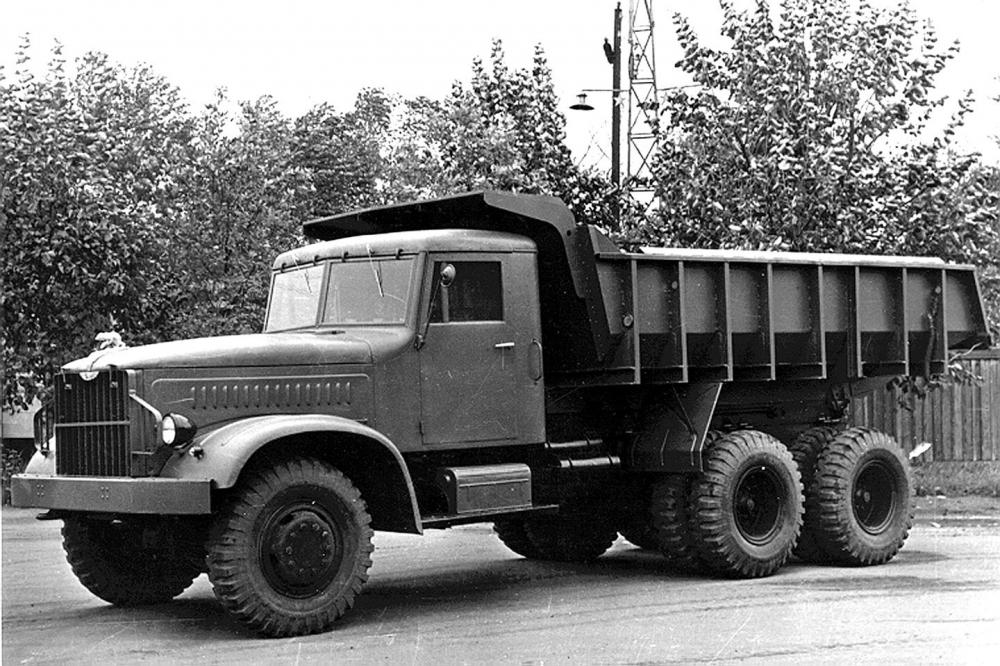
kscarbel2
Moderator-
Posts
18,854 -
Joined
-
Days Won
114
Content Type
Profiles
Forums
Gallery
Events
Blogs
BMT Wiki
Collections
Store
Everything posted by kscarbel2
-
Volkswagen courting Swedish investors to anchor Traton truck IPO
kscarbel2 replied to kscarbel2's topic in Trucking News
Volkswagen pauses plans of taking truck unit public Jason Cannon, Commercial Carrier Journal (CCJ) / March 13, 2019 Just shy of one year ago, then-Volkswagen Truck & Bus announced a name change to Traton Group – a move that was largely seen as a precursor for the company becoming a publicly traded entity independent of its Volkswagen parent. Citing economic conditions, Volkswagen says it will now put such a move on the back burner. “In the current market environment, Volkswagen Aktiengesellschaft [Wednesday] decided not to continue with the preparation of an IPO of TRATON SE for the time being,” the company said via release. “The Board of Management is still aiming for an IPO of the TRATON SE once market conditions improve.” Traton is the umbrella company for MAN, Scania, Volkswagen Caminhões e Ônibus and RIO and owns a nearly 17 percent stake in Navistar, parent company of International Trucks. While the global automotive market is off to a slow start, the U.S. truck market is fresh off a record 2018. Many OEM build slots are booked solid for 2019 with limited sales slots open for the remainder of the year. That has suppressed order intake this year, a trend that is likely to slog along until boards start opening up again in 2020. Class 8 orders for the past 12 months have totaled 429,000 units. -
Trailer-Body Builders / March 12, 2019 Dana Inc. has taken an equity position as a lead investor as part of a strategic partnership with Hyliion Inc., the companies report. Founded in 2015, Hyliion develops electric-hybrid architectures for Class 8 vehicles that can be installed on new trucks or retrofitted on existing models. The Hyliion 6X4HE system features machine learning algorithms and battery technology to optimize fuel savings and vehicle performance for reduced emissions. Under the agreement, Dana has becomes Hyliion’s source for traditional driveline components, as well as fully integrated e-Axles – which include motors, inverters, controls, gearboxes, and thermal-management technologies. In addition, Mark Wallace, president of Dana Commercial Vehicle Driveline Technologies, will become a member of Hyliion’s board of directors. “Together with Hyliion, we have a unique opportunity to develop long-haul solutions that revolutionize power conveyance and support fleets in meeting their efficiency goals, while simultaneously advancing decarbonization efforts,” said Wallace. “Dana’s wealth of knowledge and extensive strategic experience in the commercial-vehicle market creates a dynamic combination for our Class 8 hybrid platform,” said Thomas Healy, CEO of Hyliion. “We are excited to be joining forces to offer a go-to-market solution for fleets seeking e-propulsion technologies available today in the Class 8 segment.” Related reading - https://www.hyliion.com/6x4he-solution/ .
-
FCA to recall 862,520 vehicles that don't meet U.S. emissions standards David Shepardson, Reuters / March 13, 2019 Fiat Chrysler Automobiles NV will recall 862,520 gasoline-powered vehicles in the United States that do not meet emissions standards, the EPA said on Wednesday. The recall was prompted by in-use emissions investigations conducted by the EPA and testing conducted by Fiat Chrysler as required by EPA regulations, the agency said. The EPA said it will continue to investigate other Fiat Chrysler vehicles that are potentially non-compliant and may become the subject of future recalls. “EPA welcomes the action by Fiat Chrysler to voluntarily recall its vehicles that do not meet U.S. emissions standards,” EPA Administrator Andrew Wheeler said in a statement. “We will provide assistance to consumers navigating the recall and continue to ensure that auto manufacturers abide by our nation’s laws designed to protect human health and the environment.” The recall includes the 2011-2016 Dodge Journeys, 2011-2014 Chrysler 200s and Dodge Avengers and 2011-2012 Dodge Calibers. FCA said another 103,221 vehicles are being recalled in Canada for the same reason. Not a safety issue Fiat Chrysler said in a statement the EPA announcement "has no safety implications. Nor are there any associated fines." "The issue was discovered by FCA during routine in-use emissions testing and reported to the agency," the company said. "We began contacting affected customers last month to advise them of the needed repairs, which will be provided at no charge." The EPA said vehicle owners "will receive notification from FCA when parts are available for them to bring their vehicle in to be repaired. In the meantime, owners can continue to drive their vehicles." "Due to the large number of vehicles involved and the need to supply replacement components -- specifically to the vehicle’s catalytic converter -- this recall will be implemented in phases during the 2019 calendar year beginning with the oldest vehicles first," the EPA said in its statement. In January, Fiat Chrysler agreed to a settlement worth about $800 million to resolve claims by the U.S. Justice Department and state of California that it used illegal software to produce false results on diesel-emissions tests. It is awaiting the outcome of a criminal probe. The hefty penalty was the latest fallout from the U.S. government's stepped-up enforcement of vehicle emissions rules after Volkswagen Group admitted in September 2015 to intentionally evading emissions rules.
-
Bill Ford: We 'fit together' with VW Bloomberg / March 13, 2019 Ford Motor Co. and Volkswagen AG, which have been in talks to team up on electric and autonomous vehicles, make for good partners because both recognize the extent of the challenges ahead, according to Bill Ford, executive chairman of the U.S. automaker. "We fit together geographically really well, product line-wise, we fit together well," Bill Ford, the great-grandson of founder Henry Ford, said Tuesday at the CERAWeek energy conference in Houston. "We both came to the same realization that as big as our balance sheets are, no company can do this alone." Talks between Ford and VW are still at an early stage, Ford said, but there's been promising progress made in building on the partnership the two companies solidified in January to jointly produce commercial vehicles. The U.S. and German automakers have established a framework for VW to invest in Ford's autonomous vehicle partner Argo AI, people familiar with the negotiations have said. The companies also are considering joining forces on electric cars. "We're really in the early days of exploring what the possibilities could be," Ford said. "We have some clear ideas of where we want to go with it and they do, too." VW CEO Herbert Diess said separately Tuesday that his company is in " very good talks" with Ford on expanding their commercial-vehicle collaboration to include autonomous vehicles. Ford also is considering using VW's electric-car platform, dubbed MEB, in Europe and China, Diess said. "The supertanker is picking up speed," Diess said in a speech at VW's annual earnings press conference. "We are aligning Volkswagen with e-mobility like no other company in our industry." Such a deal could help position Ford for a future where electric and self-driving cars will help address problems including urban congestion and pollution, Bill Ford said. He said he's attempting to reposition the 115-year-old company for the dramatic changes that are coming, which could include selling fewer cars and developing new forms of mobility such as electric scooters. "I'd like Ford to be around another 100 years, and if that's going to happen, it's clear that we really have to branch off into new directions to try to solve some of these problems," Ford said. "It's hard because our current business model is providing all the earnings and cash flow that fund a lot of this change. So we have to do both really well. If we don't make great cars and trucks today that people want, guess what? There is no tomorrow."
-
Freightliner to Display Battery-Electric eM2 Model
kscarbel2 replied to kscarbel2's topic in Trucking News
. -
UAW VP blasts GM for using temps, increasing Mexico production Michael Wayland, Automotive News / March 12, 2019 DETROIT — The UAW is ready to "fight" General Motors during collective bargaining negotiations this summer, according to UAW Vice President Terry Dittes. Dittes used a speech Tuesday to UAW delegates to heavily criticize GM for its use of thousands of temporary workers, increasing production in Mexico and the potential closure of four U.S. plants by January 2020, among other union issues. "Brothers and sisters, you can see what we're up against as we open negotiations this coming summer," he said during the UAW's 2019 Special Bargaining Convention. "But I can tell you, we are ready for the fight and I know you're ready for the fight and I know our members are ready for the fight." Dittes, who oversees the union's GM Department, said there are "more plants that may be in jeopardy as time goes on." He did not provide specifics. A GM spokeswoman, in response to Dittes' comments, said the company continuously looks at its "global operations for greater efficiency and capacity utilization." She reiterated GM remains "committed to maintaining a strong manufacturing presence in the U.S," including more than $22 billion investments in domestic operations since 2009. Dittes, a first-term vice president, particularly took aim at GM being the largest automaker in the U.S., but with fewer union members in the U.S. than Ford Motor Co. and, potentially, Fiat Chrysler Automobiles in the near future. He also noted the company's increasing production in Mexico. GM last year became Mexico's largest auto producer, topping Nissan Motor Co. in a year when it reduced output by an estimated 5 percent in the U.S. and an estimated 33 percent in Canada, according to the Automotive News Data Center. Automakers routinely use temporary workers to assist during launches, heavy times of vacation and other short-term work. The UAW has argued companies overuse and misuse temp workers who do not receive the same benefits as company employees doing the same job. Dittes' comments come weeks after the UAW filed a lawsuit in federal court that accuses GM of breaching its 2015 collective bargaining agreement with the union. FCA expansion Dittes' speech, which drew a standing ovation, was in contrast to one earlier in the day from UAW-FCA Vice President Cindy Estrada, who previously led the GM division. Estrada, who drew several cheers, discussed FCA's investments under the current four-year contract exceeding expectations, increase in union employment and upward of $100,000 in additional income over the last four years for members. Estrada also noted additional oversight and efforts to fight against the company "pencil whipping." "We can negotiate all these great things, but we need to make sure they are implementing them on the shop floor," she said. UAW-Ford Vice President Rory Gamble and UAW President Gary Jones are scheduled to speak Wednesday at the convention, which sets bargaining priorities for the negotiations with the Detroit automakers. Contract deadline This year's contract negotiations are expected to be the most contentious in years, as automakers look to cut costs ahead of a potential downturn and the union pushes for higher wages and benefits to recover past concessions. Jones on Monday said the UAW boosted its weekly strike pay by $50 and will raise it an additional $25 in January to better support members if such action is deemed necessary. The pay UAW members receive if on strike is now $250, up from $200. It will reach $275 in January. Striking members would also receive continuing health care coverage, according to Jones. The current contracts between the UAW and Detroit automakers end Sept. 14, but it's common for that deadline to be extended.
-
Boeing is having a really bad day. Now Senators Mitt Romney, Richard Blumenthal and Dianne Feinstein are calling for all 737 MAX 8 aircraft to be grounded until what is obviously a problem has been identified and corrected. If this was a US military aircraft, the subject aircraft type would have all been grounded already. Why not a civilian aircraft? Answer - Because too much money is at stake.....the wealthy aristocracy that profits from airline investment will lobby against it.
-
Transport Engineer / March 11, 2019 Cornwall-based Combellack Vehicle Recyclers has taken delivery of two 26-tonne Volvo FM car transporters – the first in the UK to be fitted with fully galvanised eight-car salvage bodywork, by Belle Trailers. Supplied by dealer Stuarts Truck and Bus, both FM-420 6x2 rear-steer lift axle chassis are powered by D13K Euro VI engines rated at 415bhp and drive through I-Shift 12-speed automated transmissions. Inside the Sleeper cabs, Combellack specified full leather trims, refrigerators and Volvo sat-nav/audio packages, along with heated and cooled drivers’ seats. The twin-deck transporters’ specification also includes winches, solid decking and snatch blocks. “The new Volvo FMs are definitely the right truck for our operations and came in at the right price,” says Darren Combellack, general manager at the family-owned business. “Our drivers were involved in the specification process and they’ve been able to personalise the vehicles. The FMs are quiet and comfortable, with good pulling power for the many hills in Cornwall and Devon,” he adds. “The drivers also love the cooled seats, and both vehicles are regularly returning around 9mpg.” Both vehicles are supplied on a seven-year Volvo Gold repair & maintenance contract. .
-
Trucks Planet / March 8, 2019 Daimler AG subsidiary Western Star Trucks has presented an updated version of their 4700 Series truck, the most popular product in the brand's line-up. First introduced in 2011, the 4700 in 6x4 configuration has a GVW from 24 tonnes and are available as a rigid and tractor. This year the trucks got major technical improvement. The newest 11.9-liter Cummins X12 turbodiesel has the power range from 350 to 500 hp, and the torque from 1700 to 2300 Nm. Old engines are still available: 9.0-liter Cummins L9 and a 13.0-liter Detroit DD13. The advantage of the Cummins X12 is its lightweight design, which increases the load capacity and economic efficiency of the trucks. Another important innovation of the 4700 is the new automated Detroit DT12 gearbox. It has a hill climb assistance function and a clutch control system. The new gearbox provides a smoother ride. With this upgrade the Western Star 4700 Series has got new high-comfort mattress, a lane keeping function and an automatic braking system. .
-
Volvo launches FH with I-Save option for long-haul fuel savings
kscarbel2 replied to kscarbel2's topic in Trucking News
. . . . -
"Mack says its on backorder & no idea of when it will be available." Have your Mack brand dealer's parts manager contact their district parts manager (DPM) and ask for their help. If that fails, call Volvo Group's Mack brand "Customer Satisfaction" department in Greensboro, North Carolina at +1 (866) 298-6586. If they try to tell you that they don't help Mack customers with trucks "older than 5 years/500K Miles", tell them your opinion on that given your revenue generating Mack truck is "unit down".
-
Ford Expects Health-Care Costs to Top $1 Billion in 2020 Bloomberg / March 12, 2019 Ford expects the cost of health insurance for its 56,000 hourly workers in the U.S. to top $1 billion for the first time next year, according to a person familiar with the situation, highlighting a growing expense for automakers even as car sales slow. Those mounting health-care costs represent a potential sticking point in this year’s contract talks between the United Auto Workers and the three U.S. automakers that tried and failed four years ago to address an expanding outlay that threatens profits and jobs. At Ford, General Motors and Fiat Chrysler Automobiles, the tab for health insurance topped $2 billion in 2015 and has only grown since. Bargaining negotiations get underway this summer on contracts that expire in September with each of the three automakers. Some experts say divisive issues including cost-sharing for health care benefits may lead to striking. The UAW must balance its protection of benefits with the need to keep workers on the job at a time when GM is shuttering five North American factories and Ford is slashing shifts and cutting jobs as part of an $11 billion restructuring. Although the three automakers remain profitable, they are bracing for a slowdown that could become a recession while spending billions to prepare for a future dominated by electric and self-driving cars. Hard-Won Benefit Nationwide, health expenditures are projected to grow by 5.5 percent annually from 2018 to 2027, more than twice the rate of inflation, according to a new study by the Centers for Medicare and Medicaid Services. But unionized auto workers enjoy some of the most generous medical coverage plans in the country and have been spared premium increases. The UAW sees that as a hard-won benefit that helps make up for concessions to automakers in other areas. But automakers view these gold-plated worker plans as a growing burden that puts them at a disadvantage against rivals with non-unionized factories. “We’re returning to major concession negotiations in the auto industry,” said Gary Chaison, professor emeritus of industrial relations at Clark University in Worcester, Massachusetts. “The major manufacturers are saying: Give us a reason for why we should expand in the U.S. as opposed to China or India or somewhere else.” Thin Contributions With little or no co-pays or deductibles, UAW members contribute just 3 percent to their health-care coverage, compared with 30 percent by Ford’s salaried workers, said the person familiar with the matter, who asked not to be identified revealing internal data. Without changes, the growth in health-care costs over the life of the next contract would be the equivalent of a $3 hourly wage increase, the person said. In the U.S., workers with health insurance contribute an average of 18 percent of the premium for single coverage and 29 percent of the premium for family coverage, according to a study last year by the Kaiser Family Foundation. Health-care coverage has been sacrosanct at the UAW, which gave up wages and jobs in 2009 to help keep the automakers afloat but didn’t give back medical benefits. “The union has fought hard in the darkest of economic times to ensure its members remain protected,” said Harley Shaiken, labor relations professor at the University of California at Berkeley. “It’s not a rhetorical commitment. It is a substantive commitment at the bargaining table.” In 2015, when then-UAW President Dennis Williams proposed creating a health care co-op that leveraged the buying power of almost 140,000 UAW members working for Detroit automakers, workers soundly rejected it, fearing it would erode their benefits. That’s why labor analysts expect health care to be a flashpoint in negotiations for the contracts. ‘Cadillac’ Tax As the union gathers in Detroit this week to map out its bargaining strategy for this summer’s contract talks, it has made retaining and expanding health-care benefits a top priority. The union said it will seek to eliminate disparities in coverage, which have left newer workers with less-generous coverage than veterans. It also is looking to reduce co-pays on prescription drugs and avoid any “cost shifting” from companies, according to the bargaining resolutions prepared for the convention. Looming over the talks is a provision in the Affordable Care Act -- also known as Obamacare -- that will tax so-called “Cadillac” health care plans like the UAW’s at 40 percent starting in 2022. That cost would be crippling for the automakers and its workers, both sides say. But finding a way around that will be tricky. Labor experts say neither side is eager to make concessions, which could bode ill for the negotiations. “I don’t think any of the Big Three can absorb that cost, so they’re going to want more cost sharing,” Wheaton said. “But I can see the UAW saying, we’ve given up so much money on other things and we’ve tried to claw back some of that, and now you’re saying we need to make up for a 40 percent hit on health care. I think you’re talking strike.”
-
1994 mack midliner ms300 air line help
kscarbel2 replied to L.Rosa's topic in Modern Mack Truck General Discussion
The BMT family aims to please. Glad it worked out. -
China switches 4.8 million homes to gas, electricity from coal Reuters / March 11, 2019 BEIJING - China expanded its coal-to-gas and coal-to-electricity projects to 35 cities in 2018 from 12 cities the previous year, China’s environment minister, Li Ganjie, said on Monday, as the world’s second-largest economy stepped up its fight against smog. China’s winter heating program used to burn an estimated 400 million tonnes of coal a year, and switching it to cleaner types of fuel was identified as a major part of the country’s war on pollution, now in its sixth year. The program to convert households to low-emission heating ran into difficulties last winter amid widespread natural gas shortages, but 4.8 million households still managed to make the switch from coal to natural gas and electricity last year, up from 4 million households switched in 2017. China has also installed ultra-low emissions technology at more than 80 percent of its total coal-fired power generation capacity.
-
China, Ethiopia, Indonesia, Australia, Malaysia, Norway. Singapore and Oman ground all Boeing 737 MAX 8 aircraft Bloomberg / March 11, 2019 Britain, Germany, France, Iceland, Ireland and the Netherlands ban Boeing 737 Max 8 from their airspace A day after Ethiopian Airlines Flight 302 crashed and killed all 157 people on board, Africa’s biggest carrier also decided not to use its 737 Max 8 planes until further notice. China ordered its carriers to ground all 96 of the aircraft by 6 p.m. local time. Elsewhere, Indonesia’s air safety regulator said it’s discussing the possibility of grounding the Boeing planes and South Korea began a special inspection of the aircraft. For Boeing, the latest disaster soon drew comparisons to a Lion Air crash in Indonesia that killed 189 people, pushing the Chicago-based planemaker a step closer to a crisis. A blanket grounding of the 737 Max, which generates almost one-third of the company’s operating profit, in China also raised the specter of other countries following suit. “The B737 Max design is dangerously flawed,” said Mohan Ranganathan, a former commercial pilot and an aviation safety consultant based in the southern India city of Chennai. “There is a definite similarity between Lion Air and Ethiopian Airlines Max crashes.” Boeing said it did not intend to issue any new guidance to its customers. Chinese airlines accounted for 20 percent of 737 Max deliveries worldwide through January, and further purchases of the Chicago-based planemaker’s aircraft are said to have been touted as a possible component of a trade deal with the U.S. China Southern Airlines has 16 of the aircraft, with another 34 on order. China Eastern Airlines has 13, while Air China Ltd. has 14. Other Chinese airlines that have bought the Max include Hainan Airlines Holdings and Shandong Airlines. The single-aisle 737 Max is poised to generate about $30 billion in annual revenue as factory output rises to a 57-jet monthly pace this year. The disaster in Ethiopia followed the crash of Lion Air’s 737 Max off the coast of Indonesia on Oct. 29. A preliminary report into that disaster indicated that pilots struggled to maintain control following an equipment malfunction. The doomed Ethiopian jetliner left Addis Ababa at 8:38 a.m. local time, and contact was lost six minutes later. There were people from 35 nations on board, including 32 Kenyans, 18 Canadians, nine Ethiopians and eight Americans. The United Nations lost 19 staff members in the crash. The pilot of the ET302 reported problems shortly after takeoff and was cleared to return to the airport. The 737 Max 8 hadn’t had any apparent mechanical issues on an earlier flight from Johannesburg. Ethiopian Airlines had five of the planes in operation as of the end of January and orders for a further 25. Indonesia’s transportation safety committee said Monday it offered to help with the Ethiopian Airlines crash investigation and will discuss the possibility of grounding Boeing 737 Max jets operated by the nation’s airlines. Jet Airways India Ltd. and SpiceJet Ltd., two Indian airlines that use the 737 Max jet, and the country’s regulators have asked Boeing for information following the Ethiopia crash. Following the Lion Air crash, Boeing faced criticism from some U.S. pilot unions for not having detailed in its flight manual a change in the way that software on the MAX reacts in a stall compared with a previous version. Boeing was expected to introduce a software patch to help address the scenario faced by the Lion Air crew in late March or April. Boeing is already facing a string of lawsuits in the United States by families of the Lion Air crash victims, including five cases in U.S. federal court in Illinois where Boeing has its Chicago headquarters. The 737 MAX 8 uses LEAP-1B engines made by CFM International, a joint venture of General Electric Co and Safran SA. ---------------------------------------------------------------------------------------- Related: Reuters / November 15, 2018 WASHINGTON - American Airlines said on Wednesday it was "unaware" of some functions of an anti-stall system on Boeing Co's 737 MAX until last week. Boeing and the U.S. Federal Aviation Administration (FAA) issued guidance on the system last week after a Lion Air jet crashed in Indonesia on Oct. 29, killing all 189 people on board. The FAA warned airlines last week that erroneous inputs from the system's sensors could lead the jet to automatically pitch its nose down even when autopilot is turned off, making it difficult for pilots to control. The system was designed to prevent the jet from stalling, according to information provided by Boeing to airlines. "We value our partnership with Boeing, but were unaware of some of the functionality of the Manoeuvring Characteristics Augmentation System (MCAS) installed on the MAX 8," an American Airlines spokesman said. [Boeing never told American Airlines this rather important nugget of information] "We must ensure that our pilots are fully trained on procedures and understand key systems on the aircraft they fly." Indonesian investigators said on Monday the situation the crew of a doomed Lion Air jet was believed to have faced was not contained in the aircraft's flight manual. U.S. pilot unions were also not aware of potential risks, pilot unions told Reuters.
-
If the truck only has 40k, isn't it under warranty? What did the service manager of your Mack brand dealer and/or his Volvo district service manager say?
-
KXLY / March 9, 2019 Post Falls, Idaho – A semi-truck loaded with missiles for the U.S. military crashed at a rest stop along I-90 in northern Idaho Friday night. According to a release, a 2016 Volvo semi-truck carrying 16 2,000-pound missiles driven by 47-year-old Mark Dearinger, was traveling eastbound through the Huetter rest area. Idaho State Police said the 56-year-old man at the wheel was driving through the rest stop when he drove into a hazardous materials containment area – when he meant to use the interstate on-ramp. He ended up driving over a snowbank at the end of the hazmat area, which disabled the vehicle. The semi-truck was transporting 16 missiles, each one weighing 2,000 pounds. After the crash, I-90 was completely shut down for four miles. The driver was cited for inattentive driving. Video - https://www.khq.com/news/watch-isp-confirms-semi-truck-carrying-missiles-involved-in-crash/video_aaaf08e6-42d4-11e9-bd41-2f3543982f10.html .
-
Granite vs T800 and T880
kscarbel2 replied to james j neiweem's topic in Modern Mack Truck General Discussion
The Granite has been built on a modified Volvo VHD chassis since 2007. -
Granite vs T800 and T880
kscarbel2 replied to james j neiweem's topic in Modern Mack Truck General Discussion
But your 23-year old CL is a "Mack" truck. The growth of Kenworth in the vocational segment is stronger today than ever. -
Granite vs T800 and T880
kscarbel2 replied to james j neiweem's topic in Modern Mack Truck General Discussion
However you want to say it....... Over the last five years, Kenworth has effectively taken a huge market share in the vocational market. (And Peterbilt has stolen huge market share from the Mack brand in the refuse segment, never to be reclaimed) Paccar is thrilled with their success and will continue to build on that success. And obviously, that market share was almost entirely taken from Volvo’s Mack brand. The Mack brand’s reputation for reliability, established by the former Mack Trucks, has mostly evaporated. Dealer repairs are all too often time-consuming nightmares requiring multiple visits to finally peg the fault, and Volvo’s parts pricing is horrendous. With a jury rigged common rail design on an outdated unit pump block, the Volvo engine is only mediocre, versus offerings from Cummins, Detroit Diesel, the MAN-based A26 And DAF-based MX. Where’s the attraction? -
KrAZ Trucks Press Release / March 1, 2019 The first batch of licensed production KrAZ-222 dump trucks in the Democratic People’s Republic of Korea (DPRK) rolled off the assembly line of the Tokchon Automobile “Sungri” plant in 1964.. The local designation of the trucks was Jaju-64. Technical documentation to the KrAZ-222 Dnieper, equipment and tooling were transferred there in 1962 under Soviet Government’s resolution. KrAZ bore the brunt of industrialization in Democratic People’s Republic of Korea. A young country was badly in need of industry development to strengthen its sovereignty. KrAZ workers trained their Korean colleagues in the art of heavy truck production. KrAZ Trucks was awarded the Commemorative Red banner by the DPRK on this occasion on 5 February 1962 in heat-treatment shop. The banner is still kept in KrAZ museum. The design of the DPRK-built KrAZ-222 was simplified. Materials and components of the truck were sourced locally, thus affecting its appearance. Poor quality welds on dump body, tightening and bucking on pressed parts of cab, poor quality painting attracted attention. About 10,000 Jaju-64 trucks were built. In the 1980s, the truck was upgraded in partnership with a Japanese company. It was two-axle truck with an all-metal cab and modern lines. A three-axle model was also based on it. In December 2007, KrAZ managers visited the “Sungri” plant in Tokchon to discuss the relaunch of KrAZ truck production in the DPRK. But, unfortunately, this project has not been implemented. The Jaju-64 trucks, the first North Korean vehicles with Ukrainian origins, hold a place of honor in the Tokchon plant museum. .
-
KrAZ Trucks Press Release / February 27, 2019 The year was 1958. Very few people in Kraz's home city of Kremenchug had caught a glimpse of the prototype YaAZ truck to be manufactured at the all-new plant. In July, the company’s newspaper published an article headed "Product of the Not-So-Distant Future", with a photo of the YaAZ-222 dump truck and its specifications. This article said: “Many of us are interested in the new trucks to be manufactured at our plant. Dear reader, you can see the YaAZ-222 truck on the photo. It has been decided that it will be the first model to enter production”. To switch to the manufacture of vehicles, huge amount of works related to major construction and rebuilding, personnel hiring and training was to be done. Process and design engineers set to work. They had to develop over 2000 processes, make up to 1500 pieces of tooling and rigging equipment. Hundreds of engineers and technicians familiar with truck design, industry principles, able to launch production were needed. Design and process engineers and managers with significant work experience have been invited from vehicle plants across the USSR. Over 300 specialists came to “KrAZ” from across the country for six months. Local engineers and technicians with experience in bridge and agricultural machinery building gained knowledge from them on truck assembly. Much was to be done: to build over 20,000 square metres of facilities, get and install over 1100 metalworking machines, about 100 presses, 20 casting machines, up to 50 woodworking machines, 167 welding machines, and 50 heat-treatment machines. What is more, a series of assembly lines, several paint booths had to be designed, manufactured and mounted in parallel with doing some engineering jobs. Exterior help was needed. The plant’s management turned to Kharkov Council of National Economy that issued resolution obliging 16 factories to manufacture some rigging. The meeting held on 25.10.1958 to hear reports and elect new officers ruled as follows: “Prepare production facilities in due time for manufacture of 4000 trucks in 1959 and 5 500 in 1960”. However, plan for production of and launch of production of a series of agricultural machines was not cancelled. A first batch of SKD sets came from “YaAZ”. Everything was ready for assembly of Ukrainian trucks. . . .
BigMackTrucks.com
BigMackTrucks.com is a support forum for antique, classic and modern Mack Trucks! The forum is owned and maintained by Watt's Truck Center, Inc. an independent, full service Mack dealer. The forums are not affiliated with Mack Trucks, Inc.
Our Vendors and Advertisers
Thank you for your support!




